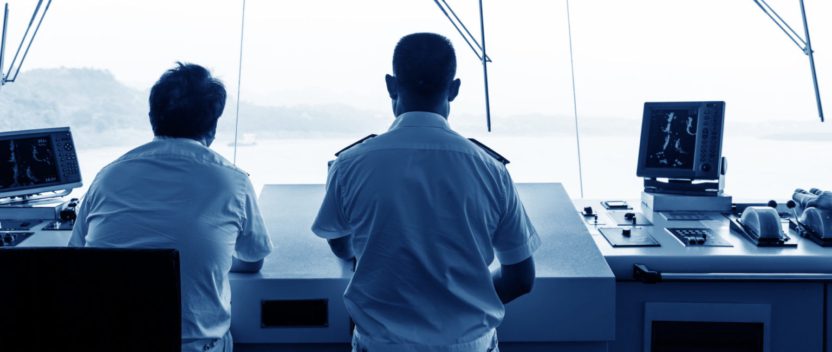Shipping was waiting for the internet
Shipping is home to plenty of innovators, people who have fostered change in the way the industry operates day to day at all levels. Set against the pace of developments in consumer markets, it can seem reactive, or led by events, when in fact shipping has shown itself ready to embrace the bigger, the faster, more efficient or cleaner in pursuit of profit and purpose.
ShipServ founder Paul Ostergaard is one of a handful of people to have brought a big data spin to shipping before the term was the lingua franca we know today. Founding a dotcom start up in 2000 against ’70 or so competitors’ and surviving the ‘internet ice age’ that followed the 2001 tech crash, Ostergaard has taken ShipServ beyond online trading functionality to provide analysis and insight of how buyers and sellers of ship supplies tick day-to-day.
Working in the industry in his native Denmark gave Ostergaard his original big idea; exchange piles of inefficient paperwork for digital efficiency. Now he just had to convince a sceptical industry just emerging from a decade of overcapacity and shrinking demand.
He is quick to point to his own experience in proving that statements about how shipping is five years behind other industries in terms of technology are too simplistic. “When I started ShipServ, I found that a ship chandler in West Africa had a PC with an internet connection and an email account. I wonder how many industries could you find on a global scale where tiny players like that, were already on the internet back then?”
The task it seemed, might not be so hard after all. Shipping depends on efficient communication, uses standardised terms, a common language and legal frameworks, conditions untypical in many other industries. Ostergaard says that cross-border approach made shipping more fertile for certain types of innovation that relied on the internet for connectivity.
“There’s a business school anecdote about how email grew faster in Russia, for example because the fax machine never got entrenched there,” he continues. “I think in shipping we had a little bit of the same. Shipping was waiting for the internet, so adoption has not been an obstacle at all for us. I don’t think you have that in a lot of other industries.”
Even so, ShipServ was proposing tools that would disrupt how procurement had taken place for hundreds of years, give or take the telex and occasional fax. The answer was not to become fixated on technology and to focus instead on the bigger prize.
In encouraging clients to see the benefits of change management, ShipServ took its own a risk: it would have been far simpler just to sell software. In acknowledging the underlying financial issues of staying around long enough to convince the market that ShipServ could deliver on its promises, Ostergaard accepts that ‘most technology is a bit about change management while most change management is about convincing a lot of people to start using your product’.
“In our case, we needed to convince a lot of people to make those decisions simultaneously in order for it to have value and that of course, increased the complexity significantly.” The bigger challenge was creating clusters of buyers and sellers who would agree to start doing things differently, which was at least 80% of the effort by his reckoning.
Critical mass was achieved around 2006, after a sobering period of internet hype and bitter competition during which the finance that had flocked to back the dotcom boom got very cold feet indeed.
One of the key differentiators that ShipServ offered was that it wasn’t a ‘build it and they will come’ story. By consistently refining and adding new products to the core platform, the company has succeeded in maintaining its tech edge while others went blunt.
“Believe it or not, we’re now finally putting in the place the last pieces of the business model that I had on my very first slide in my very first business plan presentation from 2000,” he laughs.
Consistent volume on the trading platform would in turn enable a ‘matching’ component to lock users in, after which ShipServ could turn its attention to using the anonymised data it collected to analyse buying and selling behaviour – some years before other long-mooted KPIs were released. ShipServ is beginning to expose some of that data to suppliers on its network, enabling them to benchmark their own performance and analyse what wins and loses them business and Ostergaard believes data will be the next phase.
“First there was unlocking the information from paper, from the isolated systems that it was in. The subsequent step is now turning all that data into knowledge, really, which requires a much better understanding of the data – not just at a generic level but from the perspective of each of our customers,” he adds.
Identifying which data has value and how to get to it is key to succeeding with this most modish of subjects. Ostergaard says too many people come at this the other way around: structure all the data, try to understand it and depend on people to submit it and share it.
“The process works much better if you get the data flowing first and then start using the large amount of data as a way of gaining knowledge.” Inevitably, the behemoth from Mountain View provides a telling parallel. Enter a search term for a Hollywood movie into Google 10 years ago, and you would have seen a list of webpages that included that search term. These would be ranked but the search engine didn’t really understand what you were searching for, beyond gathering information about what people were interested in.
“So let’s say now you search for The Imitation Game movie. Now you’re going to get a search result that knows that it’s a movie, which theatres have that movie and their showing times; it understands the data. It could’ve easily been the other way around. They could’ve sat down and done things like Yahoo! tried which was to have human curators put data into buckets, put structure around it to try and understand it.”
But the information as well as the data behind it moves too fast for that and despite the fact that procurement seems a singularly mundane sector, the volume and value of the business has convinced Ostergaard that the same principles could be applied elsewhere.
The initial step toward transaction efficiencies are most interesting in a market where the average transaction cost is relatively low. To a trader spending $3,000, saving 10 minutes is a big deal but not to a bunker trader spending half a million dollars, but that is changing.
“The big difference now is that getting to critical mass is going to be faster in the future, so whether it’s the bunker markets, chartering or cargo matching, all of these I think will have a model like ours,” he says.
It’s hard to argue that these markets will not be disrupted by similar models, more a question of how long it will take. “How long are people going to pay 1, 2 or 3% in commission along their supply chain for something that is increasingly becoming automatable? Somebody’s going to wake up to that in a big way at some point. People are waking up to it already but the push to change is going to become much stronger for sure.”
Ends


